
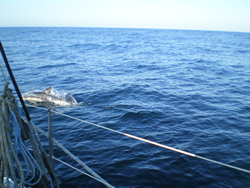
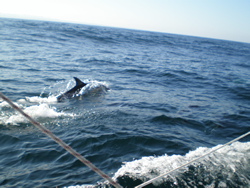
|
Any comments or questions please contact us: kevin@sailawayonline.co.uk or ann@sailawayonline.co.uk (Please note our reply depends on available internet access, we will reply to you as soon as possible.) |
This section takes us as far as Cabo de Sao Vicente and into the Algarve, to continue please follow the following link:The Algarve
Log Entry Saturday 7th June
We leave early as planned, little wind yet as the Portuguese trade winds do not begin to develop until mid day or so - we have plenty of company during the trip.
 |
 |
 |
By early evening we break through the sea mist as we approach Cabo de Sao Vicente, the trade winds in full fling, we round the point and onto Pta Sagres with over 30 knots of wind behind us.
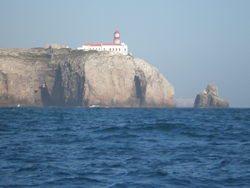 |
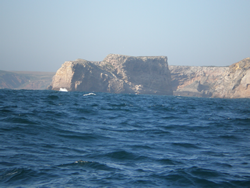 |
We turn for Sagres, we are now in the Algarve.
Log Entry Friday 6th June
We journey today to Sines with Dave (Anasu), our journey down the west coast of Portugal coming to a close. A further 60 miles south and we will be rounding Cabo de Sao Vicente into the Algarve. Sines was the birth place of Vasco da Gama, quite appropriately we anchor in the well protected harbour of the beach "Praia Vasco da Gama". We stay here only one night and travel early in the morning. Already in the marina is Chris & Barb (Dream Or Two), they are settled here for a couple of weeks with a return trip to the UK.
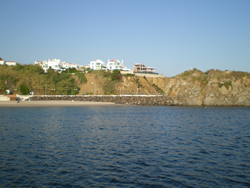 |
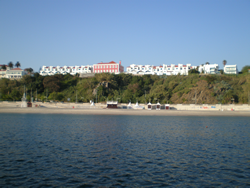 |
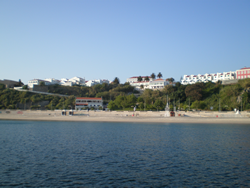 |
We arrive late, and meet up with Chris & Barb for a drink or two. The town looks very pretty, but due to our constraints we decide to continue early next morning - going ashore is not an option. We say our farewells to Chris, Barb and Dave and leave 0700 the next morning - south!
Log Entry Monday 2nd June
Cascais is effectively a suburb of Lisbon, the city easily accessible by the local train network - we take the train to have a look around the city.
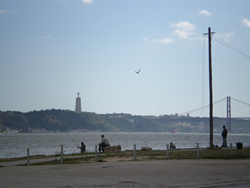 |
Our first task is to find the touristy information a find out what is to be seen and the best way to see it. We take a tram for a trip around the city, the local and historic areas.
 |
 |
 |
 |
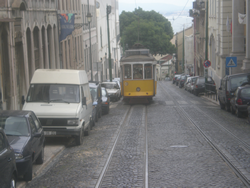 |
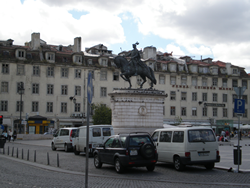 |
The city is generally pleasant and easy to get around using public transport, the busy pedestrian streets provide the typical shops, bars and restaurants.
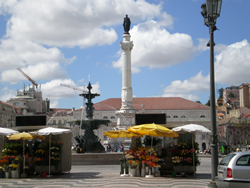 |
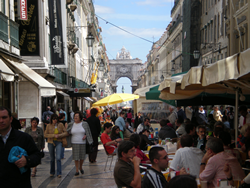 |
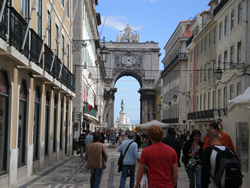 |
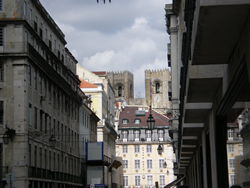 |
 |
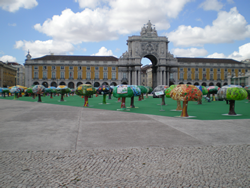 |
The city provides a good balance of historical and modern culture - well worth a visit!
Log Entry Sunday 1st June
We arrive at Cascais, at the mouth of the Rio Tejo upon the busy city of Lisbon is located. We anchor in the bay, the anchorage is quite busy with visitors, fishing vessels and the local pleasure craft. The town itself is busy colourful and very fetching to the eye.
 |
 |
 |
There is a sizable marine here, very exclusive and boasts a "Super Yacht Section", we decided to anchor!
 |
 |
The town has maintained it's original history (river fortifications) as well as it could, its local beaches are well maintained and its cafes and bars busy.
 |
 |
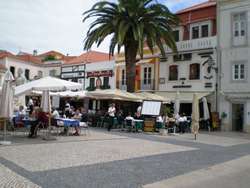 |
The town itself is quaint but has every feature one could need be it a visitor, tourist or resident.
 |
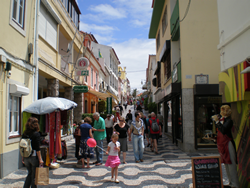 |
Log Entry Thursday 29th May
We make for Nazare, a town whose citizens claim to have Phoenician origin. The town itself has developed into a tourist resort but does hold some aspects of it ancient origin. The harbour itself is purpose built and provides save entry and a comfortable berth in any conditions.
 |
 |
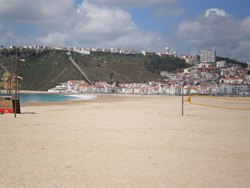 |
The town itself is very colourful and well maintained, dried fish are still prepared and sold on the local beach. We talk to a German couple berthed nearby, they had been here fifteen years ago - the dried fish industry had demised significantly as one would expect, during the last visit the remaining small section of the beach had stretched for hundreds of yards.
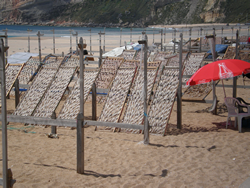 |
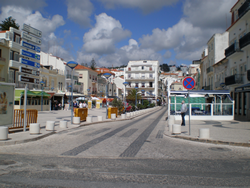 |
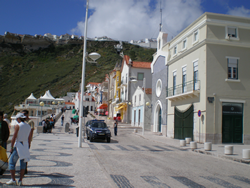 |
We need to under some repairs to our halyard management system, Mike & Sally Hadley a couple of Brit's that managed the marina made the whole exercise very quick and painless. Sally even took Ann shopping to the supermarket!
Log Entry Tuesday 27th May
Our original destination was Nazre, just over 70 miles further south, feedback of bad weather ahead pushed us into Figueira da Foz. The town is situated at the mouth of one of the longest rivers in Portugal.
 |
 |
 |
Due to the internal organisation it does not come across as one of the most friendly marinas. Once entered the marina dock you have to tie up at the Registration Pontoon, the pontoon is engineered for larger vessels than pleasure craft, not enough "tie up points", an "offshore wind" adds more variety to the task! You then have to complete all of the documentation required by the Maritima (Marine Police), this process is made simple by the staff - you are then told to berth, the Marina (staff and office) is then totally separate. Once the system is under stood all become clearer, the staff (all parties) are very helpful, if the Registration Pontoon was ran by the marina the whole process would be far less painful for all!
 |
 |
 |
The town itself is very modern, a lot of the old town still exists, and bring all the usual benefits. The facilities are excellent, the town obviously rely's heavily on shipbuilding and tourism - the local, daily market is excellent.
 |
 |
 |
Log Entry Sunday 25th May
Our journey today takes us to Aveiro, the region is one of salt marshes and sand spits. The town itself is some 12km from the harbour entrance, the river entrance feeds a number of canals which we use to take as close as we can get to the town itself. We travel up the canals for some 9-10 kilometres, berthing on a boatyard pontoon on the "Canal Principle de Navagacao" means a short walk into town.
 |
 |
The town was originally built up around the canals, it appears that the water ways are still part of the tourist attractions, a little early in the season for any major activity. Our trip into town was spoiled (to a certain extent) by the frequent down pours.
 |
 |
 |
The town streets are attractive, the decoration very pleasing to the eye (ours anyway!)
 |
 |
Log Entry Friday 23rd May
We, for one reason or another have a couple of days to kill in Porto - there is always some thing to fix while cruising, a fact of life. Chris on Dream Or Two has the most unusual task seen as yet!
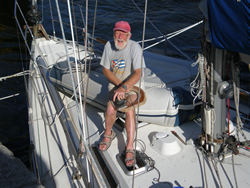 |
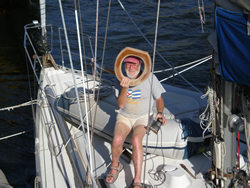 |
Once the "jobs" are done, time now to explore the city, the main activity centres around the waterfront how ever the city is complemented with numerous historic buildings and museums as one would expect. Our (free) quay side berth puts us into the centre of the activity, within easy reach of all around - free "city wi-fi" assists with communications, weather analysis etc. All of the usual benefits one would be used to in the UK!
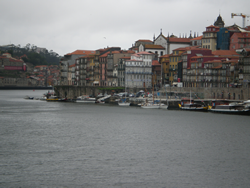 |
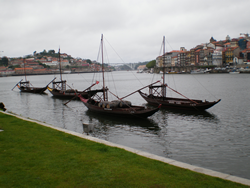 |
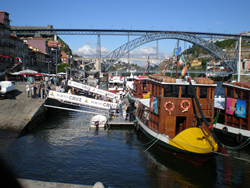 |
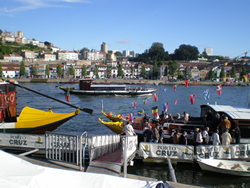 |
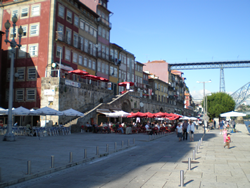 |
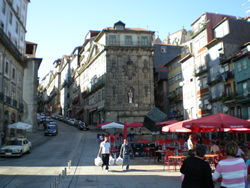 |
The Port houses support a fleet of traditional sailing craft, originally used to transport the wines down the Douro Valley, today the same trip is made by road. The activity on the river also includes other pleasure activities, canoeing, fishing etc.
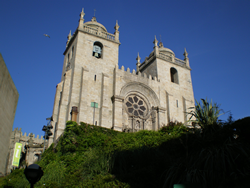 |
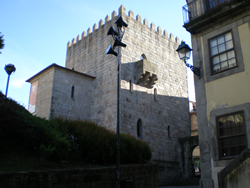 |
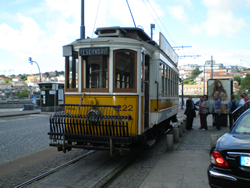 |
The architecture is very reflective of the British influence, the city cities toured by "open top type London buses" some even painted red. A tram line services the River Douro as far as the sea.
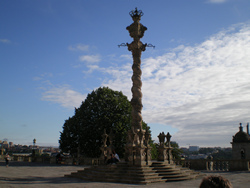 |
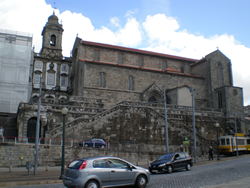 |
Unfortunately behind all of this there is a high proportion of "dereliction", it would appear the locals are either effluent (and fortunate) or not! All people we meet are very friendly and helpful!
A visit to one of the port houses is a must -we walk over the river to visit the "Calem" port house originally established by a Scotsman. For the cost of €2.0 p/p the processed is explained and then the "tasting!"
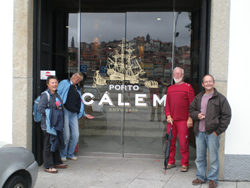 |
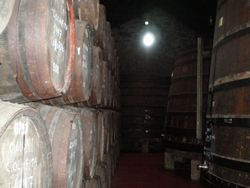 |
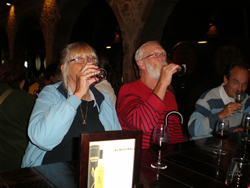 |
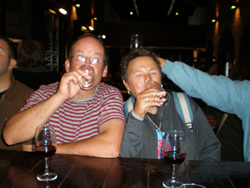 |
(www.calem.pt)
The tasting was such a success it was off to Sandeman Port House to under take a direct comparison of the products and manufacturing methods!
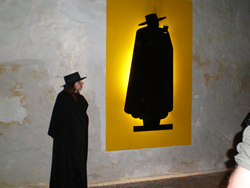 |
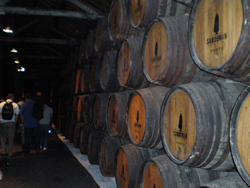 |
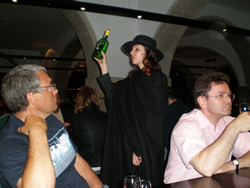 |
We after that "tasting" we were not really keen to do anything more but the walk back to our quay side berth, via a couple of bars - then time for dinner. A good day had by all!
(www.sandeman.com)
Log Entry Monday 19th May
We leave today for Porto, the winds light (more motor sailing), the Portuguese coast is very different to northern Spain. The terrain is relatively flat with constant beaches.
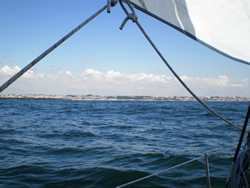 |
The waters are cluttered with lobster pots, we pass through an area of heavily populated pots (without weighted lines unknown to us at the time!). We give them normal clearance our skeg catches the first line, it fortunately frees itself, our keel catches a second. While freeing the pot we realise that they are strung in lines from land to open sea - we have to reverse off this line as it brings us to a halt. We alter coarse taking a 90 degree coarse directly out to sea, parallel to the pots. Once clear we resume our coarse south and identify the problem and its position to the two vessels behind us (Dream Or Two and ANSU).
As we approach Porto our intension is to travel approximately four mile up river (Rio Douro) and berth on the harbour wall in the town centre, we arrive at what in theory, was a good time to manage the tide. The tides here are not as regimental as in UK waters, they vary with the weather (rain) and at times wind. The northwesterly swell was interesting enough to negotiate, but we were also unfortunately met with an adverse tide of up to three knots at times in the river, the journey was slow, but very interesting. Porto is called "the second city of Portugal", the first obviously being Lisbon, its development was due considerably to it's historic involvement with the rest of Europe and the Americas. The area is famous for its port houses - a trip to at least one of them is a must!
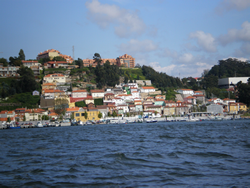 |
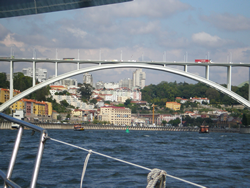 |
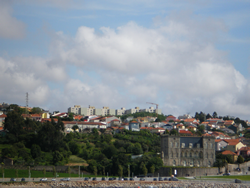 |
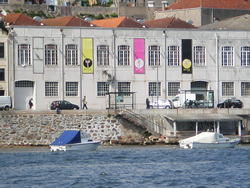 |
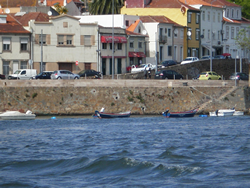 |
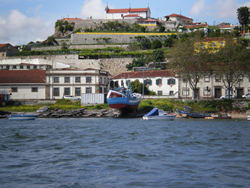 |
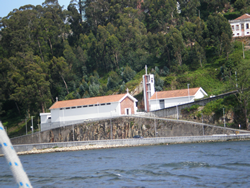 |
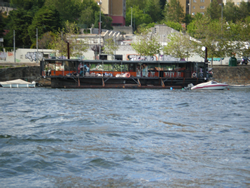 |
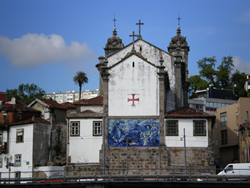 |
We travel up to the town centre, the river widens into a basin, we tie up on a wall down river of the Ponte Don Luis bridge. We are greeted by the police and complete the necessary paper work, the gentleman is very helpful.
 |
 |
 |
 |
 |
 |
The river is alive with pleasure boats full of visitors, the basin itself houses most of the port houses and has the normal variety of bars and restaurants - a very vibrant city!
Log Entry Saturday 17th May
As we pass La Guardia on the Rio Minho which marks the boarder between Spain and Portugal we drop our Spanish courtesy flag and replace it with the Portuguese.
 |
 |
 |
We also reset our watches and clocks effectively to that of UK time as Portugal is the same, unlike Spain it's neighbour!
We arrive at Viana Do Castelo mid afternoon at high water, the river is extremely tidal, especially with heavy rainfall , we make our way up river towards the marina. We opt to stay on the visitors pontoon as apposed to entering the marina via the lifting bridge. The harbour and river is a play ground for all water sports, at least the weather begins to pick up.
 |
 |
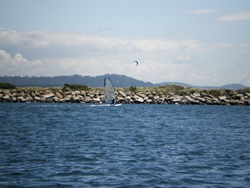 |
Viana Do Castelo, a 16th Century town grew rich from trade with Brazil and cod fishing on the Newfoundland Banks, the locals would swap locally made fortified wine for nets with England's West Country!
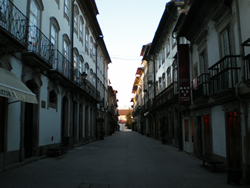 |
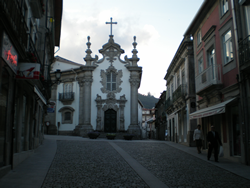 |
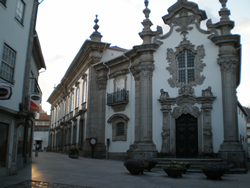 |
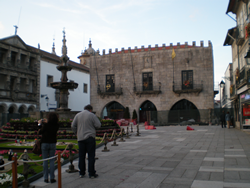 |
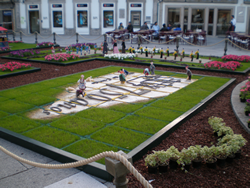 |
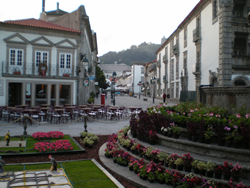 |